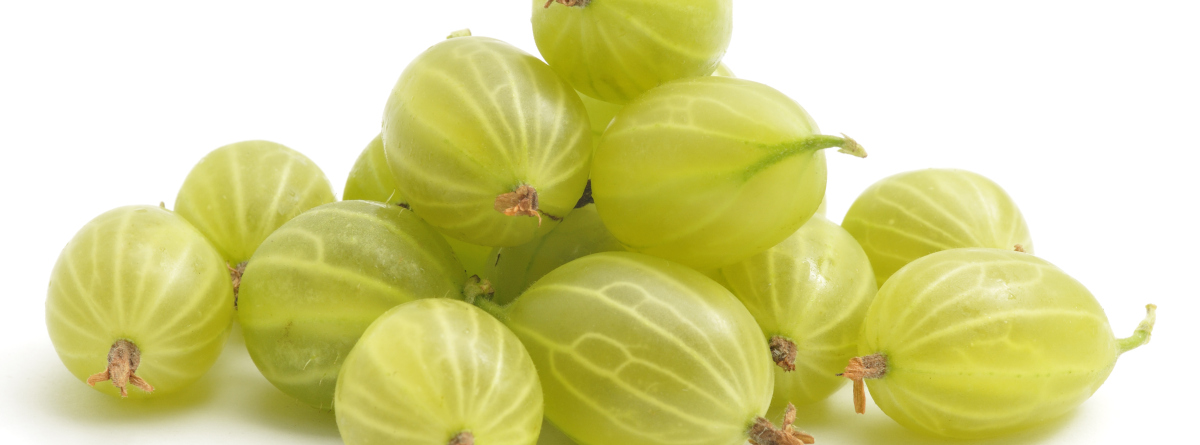
How to select
If cooking with gooseberries, choose slightly underripe berries. If buying gooseberries to eat, go for juicy berries that give to light pressure.
How to prepare
Using kitchen scissors, trim each end off each berry. Rinse under running water and pat dry with a clean cloth or paper towel.
How to store
Store gooseberries in a shallow container and refrigerate for 1-3 weeks.
Peak season
Summer
Ways to use
- Bake gooseberries into pies or tarts.
- Make homemade gooseberry jam.
- Eat gooseberries fresh as an alternative to more common berries like blueberries or strawberries.
- Fold gooseberries into pancake or waffle batter to switch up your morning meal.
Fun facts
- Gooseberries were grown in England as far back at 1276.
- Gooseberries can be white, red, green, or yellow.
- The heaviest gooseberry was 2.27 oz., the weight of a large hen's egg.
- The French refer to the gooseberry as "the macheral currant" because it's often paired with mackerel.
Nutrition info and facts
Gooseberries keep you full longer without the calories due to their high fiber, low calorie content. Gooseberries are packed with antioxidants that combat aging, cancer, and heart disease. Gooseberries contain chlorogenic acid, which is thought to help control blood sugar.
1 cup gooseberries = 66 calories, 1 g protein, 15 g carbohydrate, 7 g fiber, 46% DV vitamin C, 12% DV copper, 9% DV vitamin B5, 9% DV manganese, 7% DV vitamin B6, 6% DV potassium
Learn more
Growing currants and gooseberries in the home garden (UMN Extension)
Sources
Healthline. 8 Impressive health benefits of gooseberries. July 13, 2023.
RHS. Fascinating facts: Gooseberries.
Utah State University Extension. Gooseberries in the garden.